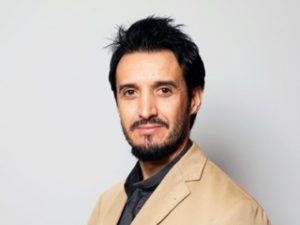
De-Shuang Huang
Institute of Machine Learning and Systems Biology, Tongji University
Title: Graph Representation Learning
Bio:
De-Shuang Huang is a Professor in Department of Computer Science and Director of Institute of Machine Learning and Systems Biology at Tongji University, China. He is currently the Fellow of the International Association of Pattern Recognition (IAPR Fellow), Fellow of the IEEE (IEEE Fellow) and Senior Member of the INNS, Bioinformatics and Bioengineering Technical Committee Member of IEEE CIS, Neural Networks Technical Committee Member of IEEE CIS, the member of the INNS, Co-Chair of the Big Data Analytics section within INNS, and associated editors of IEEE/ACM Transactions on Computational Biology & Bioinformatics, and Neural Networks, etc. He founded the International Conference on Intelligent Computing (ICIC) in 2005. ICIC has since been successfully held annually with him serving as General or Steering Committee Chair. He also served as the 2015 International Joint Conference on Neural Networks (IJCNN 2015) General Chair, July 12-17, 2015, Killarney, Ireland, the 2014 11th IEEE Computational Intelligence in Bioinformatics and Computational Biology Conference (IEEE-CIBCBC) Program Committee Chair, May 21-24, 2014, Honolulu, USA. He has published over 470 papers in international journals, international conferences proceedings, and book chapters. Particularly, he has published over 230 SCI indexed papers. His Google Scholar citation number is over 18300 times and H index 73. His main research interest includes neural networks, pattern recognition and bioinformatics.
Abstract:
Graph Neural Networks (GNN) have achieved advanced performance in many fields such as traffic prediction, recommendation systems, and computer vision. Recently there are majorities of methods on GNN focusing on graph convolution, and less work about pooling. Existing graph pooling methods mostly are based on Top-k node selection, in which unselected nodes will be directly discarded, caused the loss of feature information. In that case, we propose a novel graph pooling operator called Hierarchical Graph Pooling with Self- Adaptive Cluster Aggregation (HGP-SACA), which uses a sparse and differentiable method to capture the graph structure. Before using top-k for cluster selection, the unselected clusters are aggregated by an n-hop, and the merged clusters are used for top-k selection, so that the merged clusters can contain neighborhood clusters enhancing the function of the unselected cluster. This can enhance the function of the unselected cluster. Through extensive theoretical analysis and experimental verification on multiple datasets, our experimental results show that combining the existing GNN architecture with HGP-SACA can achieve state-of-the-art results on multiple graph classification benchmarks, which proves the effectiveness of our proposed model. Besides, we are also interested in dynamic graphs. This kind of graph that changes over time is currently rarely studied. we leave this as future work. Finally, some new research problems in this aspect will be pointed out and over-reviewed.

Juan M. Górriz
University of Granada
Title: Machine learning for statistical inference in neuroimaging
Bio:
Juan Manuel Górriz received the BSc. degrees in Physics and Electronic Engineering from the University of Granada (Spain) in 2000. He then earned the Ph.D. degrees from the Universities of Cádiz and Granada in 2003 and 2006, respectively. He has coauthored more than 400 technical journals and conference papers and has served as editor and reviewer of several journals and conference proceedings. He is actually head of the SiPBA group and collaborates as principal investigator with top research centers around the world, i.e. University of Regensburg, NorthEastern University, University of Cambridge, LM University of Munich, University of Liege, University of Milan, University of Aveiro, etc. He is currently a Full Professor with the Department of Signal Theory, Networking, and Communications at the University of Granada member of Cambridge Neuroscience and member of the Ellis Network. His present interests lie in the field of statistical signal processing in biomedical applications.
Abstract:
SAM (Statistical Agnostic Mapping) is a framework based on statistical learning theory (SLT) that provides similar activation maps than the ones obtained by the voxel-wise SPM, but defined on ROIs, under a rigorous development in scenarios with a small sample/dimension ratio and large, small and trivial effect sizes. The present methodology seeks to solve the problems related to classical inference that are observed in neuroscience. Although statistical inference based on a null hypothesis has been used predominantly for exploratory analyses in brain studies (for example, using tools like SPM, AFNI or FSL), recent research maintains that this procedure produces a high number of false positives because data from most of these studies do not meet the model’s assumptions. In this context, SAM allows the creation of significance maps in the study of a certain condition or neurological pathology from the information contained in brain imaging regions of interest, using multivariate approaches based on automatic learning.

